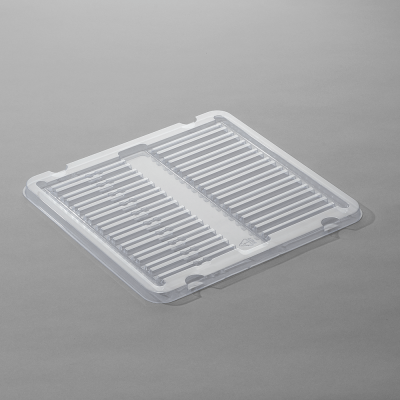
Thermoforming Process

When it comes to thermoforming the perfect component, Tru-Form Plastics has the capabilities to create exactly what you need. Our team of experts has decades of combined experience in the plastics industry, so our customers know they are getting the highest quality products every time.
The thermoforming process converts flat plastic, two-dimensional sheets into more complex three-dimensional shapes through the application of heat, vacuum, and pressure. During the process, we utilize a mold, either male or female, to define and control the shape of the part, and the formed part then goes through a trimming operation to become a finished component.
Thermoforming, unlike injection molding, allows rapid and economical design changes that can be accomplished by leveraging Tru-Form’s in-house engineering capabilities and tool shop to build our own molds and trimming fixtures. We offer both thin gauge and heavy gauge thermoforming services: thin gauge for making parts less than .060″ thickness, and heavy gauge producing parts up to 5’x9′ with draw depths to 28″. Depending on part size, production quantities can range from several parts for design and prototyping parts to 5,000 parts or more for large production runs.
Let Tru-Form Plastics manufacture your thermoformed parts to your exact specifications! Contact us today to get started on your next project.
Custom Thermoforming Capabilities Summary
PART SIZE
Up to 5’x9′ with draw depth to 28″
MATERIAL THICKNESS
.060″ to .500″ – most common .125″ to .250
QUANTITIES
Production runs from 10 to millions of units
Vacuum Forming Plastic Process

Blank Material Loaded Into Clamp
A material blank that has a length and width greater than the finished part is loaded into a clamp frame to be carried through the process.

Clamp frame loads into oven
The blank in the clamp frame moves into an oven where it is heated to the forming temperature. At the forming temperature, the material is softened and pliable, but remains in a sheets configuration and is not melted.

Oven to Forming Station
The material is then moved from the oven to the forming station. The softened blank is then sealed on the deck of the tool. In some instances, low pressure air will prestretch the material to enhance wall thickness uniformity on the finished part.

Blank is vacuumed to tool
A vacuum is drawn between the blank and tool to form the softened material against the tool surface. In pressure forming, while the vacuum is drawn to avoid air entrapment, positive air pressure is applied on the non tool side of the material to force the material against the tool surface.

Additional Option for Process
An option for the process when using female tools is to use a ‘pusher’ or ‘plug assist’ on the non tool side of the blank to control and improve material distribution in the finished part.

Formed Part is Removed
The now formed part, while still in the clamp frame, is removed from the forming tool.
The clamp frame releases (opens) for part removal. The formed part is now ready for the next step – trimming.